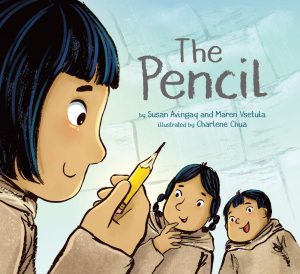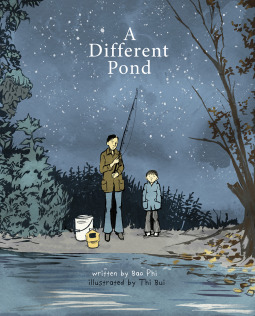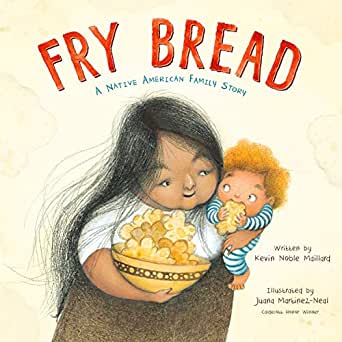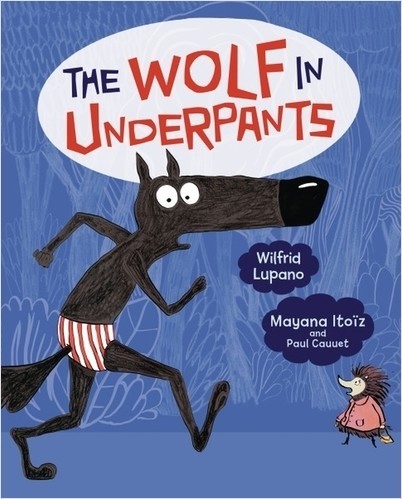By Susan Corapi, Trinity International University, Deerfield, IL
 The world economic crisis due to COVID-19 has left many unemployed. Newscasts report on long lines of people waiting to enter food banks or receive relief supplies. Then they report on the latest bankruptcy and use terms that hearken back to the Great Depression. Most of us know someone who has suffered from the economic downturn, which, in turn, creates anxiety in the rest of us.
The world economic crisis due to COVID-19 has left many unemployed. Newscasts report on long lines of people waiting to enter food banks or receive relief supplies. Then they report on the latest bankruptcy and use terms that hearken back to the Great Depression. Most of us know someone who has suffered from the economic downturn, which, in turn, creates anxiety in the rest of us.
During the spring semester, my university students struggled to keep up with a full load of classes through Zoom meetings, all the while helping their families out. Students’ families had small businesses that were floundering and other students had parents who had lost jobs, so all were working small jobs wherever possible. During weekly check-ins, I invited students to talk about some of the anxiety they felt as families cut back so they could maximize funds. So, this week we look at narratives of people who are lacking basic necessities.
Readers can find many fine books that profile the loss of basic necessities for various reasons. Settings and situations vary. Some are in refugee camps because of fleeing a war. Some are homeless due to job loss or natural disasters. But this week, rather than focus on the cause, I profile books that provide opportunities for discussion about the ways people deal with a lack of resources.
The first book is a story from the author’s childhood and involves a shift in her mother’s perspective. In The Pencil by Susan Avingaq, Maren Vsetula and Charlene Chua, an Inuit mother is called out to help a neighbor in childbirth while the author, her father and two younger siblings remain in the snug iglu. What do you do when you are living in a small space with few goods and you can’t go outside because the cold is dangerous? The narrator gives readers a clue when she states, “We didn’t have much, so our parents told us to use what we had wisely.” The rest of the story presents what wise use might be!
After the children listen to their father tell stories, the girls practice drawing letters on the frozen window. Then the children are drawn to the wooden box in which their mother stores her important things: tools for scraping skins, sinew and needles for sewing, and even a pencil and one piece of paper! Pencils and paper are scarce, so the children are surprised when their father invites them to use the precious supplies to draw pictures of their family and their home. When the mother finally comes home, the surprise and distress is evident on her face when she sees her one pencil much shorter and her one paper full of pictures. The change in her perspective occurs when she sees the pride in her children’s faces over their drawings. After a gentle reminder to be careful with precious resources, she is able to celebrate all the children did. The author reminisces at the end of the story, reflecting on how something as small as paper and pencil brought so much joy.
 Next, consider A Different Pond by Bao Phi and Thi Bui, 2017. While this book is, on the surface, about an early morning fishing trip, it is also about the resourcefulness of parents and what they do to provide food, shelter and a healthy home environment for their children. The narrator is the youngest child in a Vietnamese immigrant family. The parents escaped Vietnam and are now working multiple jobs to support their family. Their efforts to provide food include a nighttime fishing trip. The pond is marked with a worn No Trespassing sign, but that does not deter the diverse group of people intent on catching their dinner: a fellow Hmong immigrant tells jokes, and an African American man shows the narrator his fancy lure collection. For the young narrator, the trip includes the chance to develop important fishing skills like baiting a hook and transferring fish to the bucket. Frugal practices are passed down from father to son as the young boy builds a fire with exactly 10 sticks and one match. But it is not just work: stories from the father’s childhood are shared as the two work together to provide a meal for the evening.
Next, consider A Different Pond by Bao Phi and Thi Bui, 2017. While this book is, on the surface, about an early morning fishing trip, it is also about the resourcefulness of parents and what they do to provide food, shelter and a healthy home environment for their children. The narrator is the youngest child in a Vietnamese immigrant family. The parents escaped Vietnam and are now working multiple jobs to support their family. Their efforts to provide food include a nighttime fishing trip. The pond is marked with a worn No Trespassing sign, but that does not deter the diverse group of people intent on catching their dinner: a fellow Hmong immigrant tells jokes, and an African American man shows the narrator his fancy lure collection. For the young narrator, the trip includes the chance to develop important fishing skills like baiting a hook and transferring fish to the bucket. Frugal practices are passed down from father to son as the young boy builds a fire with exactly 10 sticks and one match. But it is not just work: stories from the father’s childhood are shared as the two work together to provide a meal for the evening.
The circumstances of the family are obvious from the clues: the father almost falls asleep at the dinner table because he is working multiple jobs; the older children take care of the young narrator while both parents are gone; homeless people roam their neighborhood. But poverty is the side story. The primary story is about the experience of a father-son fishing trip that includes time together, stories and the pride in catching food that feeds the family. The final scene of the book captures the warm home environment as the family eats rice, fish and fish sauce, and shares conversation centered on homework and funny stories.
 Fry Bread by Kevin Noble Maillard and Juana Martinez-Neal is a loose rhyme describing what fry bread means to the Native American community. It also demonstrates creativity in the face of want. The author notes in the back are priceless because they describe the resiliency of Native Americans and how they adapted to new foods after being forced to migrate to a new place with unfamiliar climates and plants. On the page Fry Bread is History, the author writes, “With unknown food, We made new recipes, From what we had.” But this book does not just talk about creativity; it also illustrates bonds that exist over a common food, and the community that is built around the process of making the bread and eating it. It celebrates bonds that are built over a shared meal.
Fry Bread by Kevin Noble Maillard and Juana Martinez-Neal is a loose rhyme describing what fry bread means to the Native American community. It also demonstrates creativity in the face of want. The author notes in the back are priceless because they describe the resiliency of Native Americans and how they adapted to new foods after being forced to migrate to a new place with unfamiliar climates and plants. On the page Fry Bread is History, the author writes, “With unknown food, We made new recipes, From what we had.” But this book does not just talk about creativity; it also illustrates bonds that exist over a common food, and the community that is built around the process of making the bread and eating it. It celebrates bonds that are built over a shared meal.
I am a person who enjoys humor, so our final books this week are a humorous look at the lack of clothing, shelter and food. In The Wolf in Underpants, (2019) French author and illustrators Wilfrid Lupano, Mayana Itoiz, and Paul Cauuet introduce us to a cast of forest animals living in a community in which anxiety over problems (in this case the presence of a wolf) drives the economy. The deer give scholarly lectures about wolves and bears teach wolf-defense karate. Others sell wolf fences, wolf traps and wolf crime novels. When the wolf shows up in town and is surprised they think him scary, he explains that he used to howl because his rear end was so cold, and his teeth would look scary because they were chattering from the cold. When a kindly owl knitted him a pair of red-stripped underpants, his life turned around because he was no longer cold, demonstrating that a small act of kindness can go a long way.
 In the sequel, The Wolf in Underpants Freezes His Buns Off (2020), the forest animals deal with a bitterly cold winter. However the economy flourishes for those who can make and sell hot buns and steaming cheese fondue. Sadly the buns and fondue are out of reach for the smaller animals. Soon everyone notices that lots of small animals are disappearing and assume that the wolf has reverted back to his old carnivorous self and is capturing and eating them. After stirring up the population into an “anti-wolf” frenzy, the wolf brigade goes into action and beats down his door. They discover that the wolf has been rescuing the small animals and sheltering and feeding them in his warm den. He admonishes the forest crowd for being selfish and not sharing with the small ones who need more support in the cold winter with food and shelter. He demonstrates that in challenging times (like a cold winter) we all need to take action to ensure basic needs for food and shelter are met.
In the sequel, The Wolf in Underpants Freezes His Buns Off (2020), the forest animals deal with a bitterly cold winter. However the economy flourishes for those who can make and sell hot buns and steaming cheese fondue. Sadly the buns and fondue are out of reach for the smaller animals. Soon everyone notices that lots of small animals are disappearing and assume that the wolf has reverted back to his old carnivorous self and is capturing and eating them. After stirring up the population into an “anti-wolf” frenzy, the wolf brigade goes into action and beats down his door. They discover that the wolf has been rescuing the small animals and sheltering and feeding them in his warm den. He admonishes the forest crowd for being selfish and not sharing with the small ones who need more support in the cold winter with food and shelter. He demonstrates that in challenging times (like a cold winter) we all need to take action to ensure basic needs for food and shelter are met.
Each of these stories describe some of the fear and anxiety of dealing with scarcity. Our final week in this series will focus on the emotions occurring during civil unrest.
Journey through Worlds of Words during our open reading hours: Monday-Friday, 9 a.m. to 5 p.m. and Saturday, 9 a.m. to 1 p.m. To view our complete offerings of WOW Currents, please visit its archival stream.
